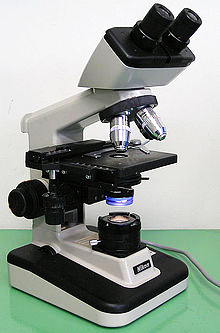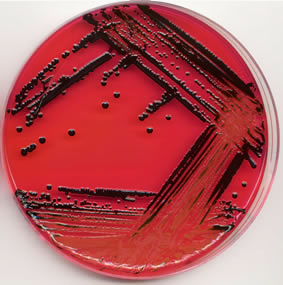Introduction
Medical Laboratory Technologist (MLT) is one of the several professions listed under the allied health science (AHS) group. This profession is not well known among the general public because many of the tasks performed are done behind the scene, unlike the Nurses and Medical Assistant profession. Medical Laboratory Technologist is the backbone of the medical laboratory service as the MLT’s are involved at all levels of the laboratory services from the pre-clinical, clinical right up to the post clinical stage. Medical Laboratory Technologist is an AHS professional who is involved in the process of diagnosing for treatment, rehabilitation and prevention through clinical laboratory tests.
Function And Responsibility
MLT’s main function is to run diagnostic tests in the laboratories of hospitals and health clinics to produce test results to help doctors make a diagnosis of a disease. This diagnostic test is conducted on a wide variety of specimens such as blood, urine, body fluids, faeces (stool) and tissue samples, depending on the type of test that will be performed. MLTs are responsible for ensuring the suitability of the specimens obtained from patients for the test that is to be performed and the accurate results is given at the fastest possible time the medical officer to ensure effective treatment.
An individual may apply through the Public Services Commission’s (SPA) website and choose the MLT position from several posts offered by the Ministry of Health Malaysia (MOH). Candidates, who meet the required conditions, will be screened via an examination and interview. Successful applicants will be offered the Medical Laboratory Technology course which is conducted by the College of Medical Laboratory Technology (KTMP) in Kuala Lumpur, or at the College of Allied Health Sciences, Kuching. Students will be given scholarships or allowances during the 3 years of training as well as hostel facilities while in the MOH College.
The following are some of the basic field in medical laboratory sciences:-
Parasitology
- Microbiology
- Histopathology
- Cytology
- Haematology
- Biochemistry
- Blood Banking/ Immunohematology
After completing the training and passing the mandatory examinations, students will be awarded with a diploma in Medical Laboratory Technology and appointed as a Medical Laboratory Technologist (MLT). The newly appointed MLT will be stationed in hospital laboratories, health clinics and other public health institution in accordance with vacancies available.
MLTs are also trained in the public and private institutions of higher learning. Before the liberalisation of the national education system, besides KTMP that is situated in the Institute for Medical Research (IMR), MLTs were also trained at the University of Malaya (UM), Universiti Kebangsaan Malaysia (UKM), Science University of Malaysia (USM) and MARA Institute of Technology (ITM). Currently, USM and UKM have stopped their MLT course at the diploma level and are focusing on the degree programme. However there are many private educational institutions that are offering Medical Laboratory Technology diploma programme for candidates who qualify. College and private university students do not get scholarships like those in MOH but need to get a PTPTN loan or acquire funding from any agency that provides loans or educational scholarship.
Duties Of An MLT In The Laboratory
There are hundreds of laboratory tests which are offered according to the needs and capacity of the respective health institutions. Each of the tests requires a distinctive individual sample and every sample must be sent to the laboratory in a container labelled as biohazard. This is because all samples will be considered as biohazard or material that may pose risk to human health and the environment due to biological processes. For example the sample may be contaminated with HIV or Hepatitis virus and other infectious germs.
 |
 |
| (a) Sample in biohazard plastic | (b) Sample in ice |
Figure 1 (a), (b): Methods of sample transfer to the laboratory
Before commencing on any technical work, the MLTs will equip themselves with the suitable personal protective equipment (PPE) such as gloves, goggles, mask, lab coat and shoes. This PPE will be worn in accordance with the work to be done. MLT will run all diagnostic tests including tests on tissues or body fluids such as urine, faeces, sputum or blood to detect any abnormalities and the patient’s current health status.
There are laboratory tests that are carried out with the aid of machines. Therefore, MLTs working in such laboratories should carry out quality control tests on the machines used. Quality control ensures that the machines produce accurate test results. All samples will be kept in a designated place once the test is carried out.
Among the types of test that require a blood sample is the liver function test, renal function test, bilirubin (jaundice) test, cardiac function tests, hormone tests and blood cell count test. Whereas the test that requires a sputum sample is the tuberculosis test. Some samples should be processed in a fume hood because the sample may release viruses or bacteria. In conducting the test, MLT needs to get accurate test results and as soon as possible to help doctors detect and treat health problems, diagnosis and determine the effectiveness of treatment
For patient who requires blood transfusion, MLT will be solely responsible for testing the compatibility of blood between the blood donor and the patient’s blood. THERE CANNOT be room for errors to occur while running the compatibility test blood for this test, as it involves the patient’s life. Blood donor screening will go through various stages before it is used for those patients in need.
In addition, MLT also help in conducting some special major procedures in hospitals. Among these procedures are the Bone Marrow Aspiration Test (BMAT) procedure, Fine Needle Aspiration Cytology (FNAC) and bedside blood grouping test directly from patient. Usually the BMAT test is performed for patients who are suspected of suffering from blood cancer (leukaemia) or to see the effectiveness of chemotherapy and bone marrow transplant. FNAC test to be carried out for early action to investigate the lymphoma (tumour that exists on lymph node). Meanwhile bedside blood grouping test carried out to determine group or patient blood type and to see if there is any clash between two blood group results.
These reagents should be prepared by the senior MLT in the best possible manner. This preparation involves experience, precision and accuracy. Usually these things are done by the senior MLT as any damage to the reagent can cause invalid laboratory test results.
There are some initial laboratory screening tests that require blood film examination. For example blood cell count and peripheral blood film test. These tests require an MLT to insert a glass blood film slide under a microscope to detect or count the presence of blood cells that would be indicative of a particular kind of disease. Primary examples of diseases that require these tests are leukaemia, thalassemia, anaemia, malaria and dengue.
An MLT not only tests the sample provided, in fact has to ensure the proper procurement and transportation of samples. Blood samples that are sent in tube containers need to be ascertained that it is not lysed and some of the test cannot be carried out on clotted blood samples (clumping of red blood cells). Prior to the analysis, some samples should be put in an appropriate container (by sample type and test) and transferred in ice or suitable chemicals substance to the laboratory. This is to ensure accurate test results and it will be accessible as soon as possible to help medical officers make a diagnosis and provide treatment.
All body fluids and tissues can be tested to gather specific information. This is not only useful in the diagnosis and treatment of disease, but also important in the world of forensics to solve crimes. At present, the main areas of an MLT are:-
- Chemical Pathology.
- Nutrition.
- Radiochemistry.
- Medical Microbiology.
- Virology.
- Medical Parasitology.
- Immunology.
- Anatomical Pathology.
- Cytology.
- Haematology.
- Immunohematology.
- Biotechnology.
- Forensic
Figure 2: Microscope
There are also various other fields like Nuclear Medicine and Embryology, but very rarely MLTs are stationed in these fields.
In the management of the laboratory, the senior Medical Laboratory Technologist is responsible for ensuring that the supplies of consumables and disposables are always sufficient.
Senior Medical Laboratory Technologist will ensure the variety of apparatuses and machinery used is inspected and maintained so that the machines are always in good condition. These machines are tools that help the Medical Laboratory Technologist to conduct laboratory tests. Senior Medical Laboratory Technologist is also responsible for reporting the number of tests carried out or the workload for a period of time to the upper management to help the manpower planning needs and expenses for the future.
 Figure 3: Media culture that has been cultured
Figure 3: Media culture that has been cultured
In addition to the diagnostic laboratories, MLTs are also placed at the Institute for Medical Research (IMR) to perform special diagnostic tests and are also involved in biomedical research. MLT’s that are involved in medical research, help to carry out test to study diseases or the effects of recent medication. There is also The Animal House or laboratory animal resource unit where animals such as mice, monkeys, rabbits, guinea pigs and hamsters are kept and breed for research purposes. Laboratory animals will be supplied to researchers at the Institute, universities and other government research agencies. Research done not only helps to enhance test methods to be more accurate and effective, it even helps in the development of technology used in laboratories.
In order to upgrade the medical laboratory services, MLT’s need to have more expertise and skills by furthering their education from the diploma to a bachelor’s, master’s, and doctorate level. Now many institutions of higher learning offer educational programmes appropriate for MLTs interested in pursuing higher education.
Conclusion
All Medical Laboratory Technologists have certain common characteristics. They are problem solvers. They love challenges and take responsibility (accountable) for all their tasks. They produce work that is accurate and reliable, even under pressure. They communicate well in written and oral form. They set high standards for themselves and emphasize quality in the work they do. They are very committed to their careers, and are interested in all areas of medical laboratory science. For those who chose a career in the field of medical laboratory science, the exploration never ends.
References
- http://www.spa.gov.my
- http://kolejteknologimakmalperubatan.blogspot.co
| Last Reviewed | : | 3 April 2017 |
| Translator | : | Badarul Zaman bin Abdul Aziz |
| Accreditor | : | Abdul Rahman bin Bakar |







